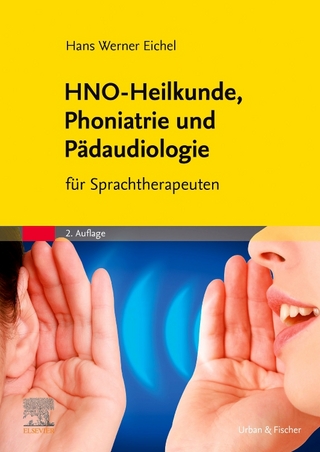
Clinical Research in Communication Disorders
Plural Publishing Inc (Verlag)
978-1-63550-187-2 (ISBN)
This thoroughly updated fourth edition of ''Clinical Research in Communication Disorders: Principles and Strategies'' remains an instrumental resource for courses on research methods and design in communication disorders.
The book is separated into three key sections: science and the scientific methods, clinical research designs, and doing, reporting, and evaluating research. Together, these sections provide thorough coverage of both the single-subject and group design strategies along with issues of measurement; philosophy of science; ethics of research; and planning, conducting, and reporting research.
Instructors and students in communication sciences and disorders will appreciate the text’s comprehensive coverage of scientific methods, group and single-subject research designs, report writing, and ethics of research in a single source.
'New to the Fourth Edition
*New coauthor, Anthony P. Salvatore, PhD
*A new chapter on statistical analysis of research data, including several statistical techniques for single-subject research data, meta-analysis of both group and single-subject studies
*Updated criteria for visual analysis of single-subject research data
*New sections on translational research, qualitative research, and mixed methods research
*Descriptions of additional research designs not included in the previous edition (e.g., the regression discontinuity design)
*Updated information on research ethics and review of fraudulent biomedical research
*Web-based sources that monitor research fraud and recalled studies
*Updated and expanded references throughout
Key Features
*Chapter outlines open each chapter and provide a summary of the key topics
*Chapter summaries recap key points in an easy-to-read bulleted format
*End-of-chapter study guides allow readers to test their knowledge
*Bolded key terms throughout
*Access to a PluralPlus Companion Website with PowerPoint lecture slides for each chapter
M.N. Hegde, PhD is Professor Emeritus of Speech-Language Pathology in the Department of Communicative Disorders at California State University, Fresno. A highly regarded author in speech-language pathology, his books include leading texts in academic courses and valuable resources for clinicians. His books have been used in worldwide in speech-language pathology programs.++++++++++++++++++++++++++++++++++++++++++++++++++++++++++++++++++++++++++++++++++++++++Anthony P. Salvatore, PhD is a Distinguished Professor in the Department of Communicative Disorders at the University of Louisiana at Lafayette. Dr. Salvatore is a graduate of Emerson College, BS and MS, and University of Pittsburgh, PhD. He is a member of the Texas Speech-Language-Hearing Association Hall of Fame. Dr. Salvatore holds the Certificate of Clinical Competence (ASHA) and Board Certificated-Academy of Neurologic Communication Disorders and Sciences.
Preface to the First Edition
Preface to the Fourth Edition
Part I. Science and the Scientific Methods
Chapter 1. Why Study Science and Research Methods?
Evaluation of Research
The Need to Study Scientific Methods
The Need to Produce In-House Knowledge
Why Research by Clinicians is Limited
Problems Associated with Certain Research Practices
Problems Associated with the Education and Training Models
Summary
References
Study Guide
Chapter 2. An Introduction to Research: The Formal and Formative Approaches
What is Research?
Why Do Scientists Do Research?
How Is Research Done?
Serendipity in Research
Planning is Still Important
Summary
References
Study Guide
Chapter 3. Science and Its Basic Concepts
What is Science?
Outcome of Scientific Activity
Variables and Their Types
Causality and Functional Analysis
Experiment and Experimental Control
Hypotheses in Scientific Research
Theories and Hypotheses
Inductive and Deductive Reasoning
Theories and Scientific Laws
Data and Evidence
Summary
References
Study Guide
Chapter 4. Treatment Research
Evidence-Based Practice
What is Treatment Research?
Consequences of Treatment
Treatment Research: Logical and Empirical Constraints
Group Treatment Research: Randomized Clinical Trials
Single-Subject Treatment Research: Multiple Control Conditions
Randomized Clinical Trials Versus Single-Subject Treatment Research
Classification of Treatment Research
Summary
References
Study Guide
Chapter 5. Other Types of Research
Ex Post Facto Research
Normative Research
Standard-Group Comparisons
Experimental Research
Clinical and Applied Research
Translational Research
Sample Surveys
Qualitative Research
Mixed Methods Research
The Relation Between Research Types and Questions
Summary
References
Study Guide
Chapter 6. Observation and Measurement
Observation and Measurement
Philosophies of Measurement
Scales of Measurement
Measures of Communicative Behaviors
Client-Assisted Measurement
Indirect Measures: Self reports
The Observer in the Measurement Process
Mechanically Assisted Observation and Measurement
Reliability of Measurement
Summary
References
Study Guide
Part II. Clinical Research Designs
Chapter 7. Research Designs: An Introduction
What Are Research Designs?
The Structure and Logic of Experimental Designs
Variability: Philosophical Considerations
Experimental Designs: Means of Controlling Variability
Validity of Experimental Operations
Generality (External Validity)
Factors that Affect Generality
Concluding Remarks
Summary
References
Study Guide
Chapter 8. The Group Design Strategy
Common Characteristics of Group Designs
Preexperimental Designs
True Experimental Designs
Designs to Evaluate Multiple Treatments
Factorial Designs
Quasi-experimental Designs
Time-Series Designs
Counterbalanced Within-Subjects Designs
Correlational Analysis
Group Designs in Clinical Research
Summary
References
Study Guide
Chapter 9. Single-Subject Designs
Historical Background of Single-Subject Designs
Characteristics of Single-Subject Designs
Experimental Control in Single-Subject Designs
Preexperimental Single-Subject Design
Designs for Single Treatment Evaluation
Designs for Multiple Treatment Comparison
Design for Interactional Studies
N-of-1 Randomized Clinical trials
Single-Subject Designs in Clinical Research
Summary
References
Study Guide
Chapter 10. Statistical Analysis of Research Data
Historic Introduction to Statistical Analysis of Research Data
Statistical Significance
Hypothesis Testing
Statistical Analysis of Group Design Data
Systematic Reviews and Meta-Analyses
Visual Analysis of Single-Subject Data
Statistical Analysis of Single-Subject Data
Statistical Significance Versus Clinical Significance
Summary
References
Study Guide
Chapter 11. Generality Through Replications
Direct Replication
Systematic Replication
Sample Size and Generality
Failed Replications: Sources of Treatment Modifications
Homogeneity and Heterogeneity of Participants
Summary
References
Study Guide
Chapter 12. Comparative Evaluation of Design Strategies
Research Questions and Investigative Strategies
Advantages and Disadvantages of Design Strategies
Problems Common to Design Strategies
Philosophical Considerations in Evaluation
The Investigator in the Design Selection Process
The Final Criterion: Soundness of Data
Summary
References
Study Guide
Chapter 13. Designs Versus Paradigms in Research
Limitations of Exclusively Methodological Approaches
Research Methods and Subject Matters
Philosophy as Methodology
Philosophy of Subject Matters
Philosophy of the Science of Speech and Language
Philosophical Ways of Handling Methodological Problems
The Interplay Between Philosophy and Methodology
Summary
References
Study Guide
Part III. Doing, Reporting, and Evaluating Research
Chapter 14. How to Formulate Research Questions
How to Formulate Research Questions
Preparation of Theses and Dissertations
Summary
References
Study Guide
Chapter 15. How to Write Research Reports
General Formats of Scientific Reports
Structure and Content of Research Papers
Writing Without Bias
Good Writing: Some Principles
Writing Style
Writing and Revising
Summary
References
Study Guide
Chapter 16. How to Evaluate Research Reports
Professionals as Consumers of Research
Understanding and Evaluating Research
Evaluation of Research
Evaluation of Research Reports: An Outline
A Hierarchy of Treatment Research Evidence
Evaluation and Appreciation of Research
Summary
References
Study Guide
Chapter 17. Ethics of Research
Fraud in Scientific Research
Ethical Justification for Treatment Evaluation
The Protection of Human Participants in Research
Ethical Issues with Treatment Research
Consequences of Ethical Constraints
Protection of Animal Subjects
Dissemination of Research Findings
Summary
References
Study Guide
Index
| Erscheinungsdatum | 30.04.2019 |
|---|---|
| Verlagsort | San Diego |
| Sprache | englisch |
| Maße | 178 x 254 mm |
| Themenwelt | Medizin / Pharmazie ► Gesundheitsfachberufe ► Logopädie |
| Medizin / Pharmazie ► Medizinische Fachgebiete ► HNO-Heilkunde | |
| ISBN-10 | 1-63550-187-3 / 1635501873 |
| ISBN-13 | 978-1-63550-187-2 / 9781635501872 |
| Zustand | Neuware |
| Informationen gemäß Produktsicherheitsverordnung (GPSR) | |
| Haben Sie eine Frage zum Produkt? |
aus dem Bereich


